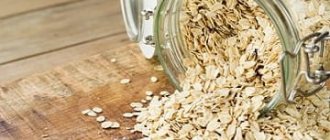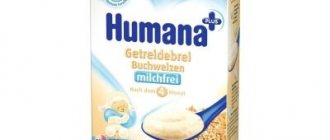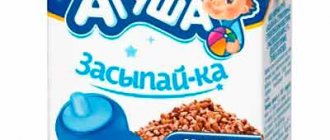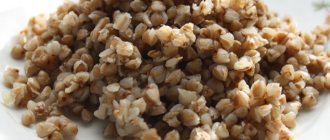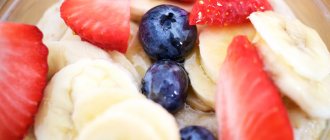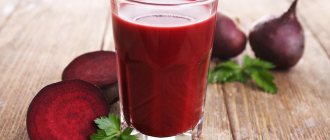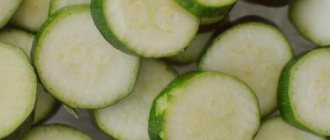What brand of porridge is best to choose for first feeding?
The first year of development and growth of a baby is accompanied by colic and adaptation of the digestive organs to new types of nutrition. Therefore, it is extremely important to provide him with breastfeeding; if this is not possible or this is not enough for the baby, use baby cereals from reliable companies. These are considered:
- Nestlé is a Swiss multinational company operating since 1886. It is considered the largest supplier of food products, including for children, and animal feed. After some time, cosmetics and pharmaceutical products began to be produced under this brand.
- Fleur Alpine - the company was founded in Lithuania in 2008. Supplies a line of organic baby food to the world market, at first it was herbal teas for babies, now dairy-free/milk formulas, and other products made according to organic farming standards. The “euro sheet” label indicates a European notified body that confirms organic quality.
- Bebi is a Slovenian baby food brand that has been supplying its products to the market for over 35 years. During the creation of each unit, specialists follow the latest scientific research in this field. The Premium prefix confirms the premium quality of the range.
- Baby Sitter is a trademark of the Israeli company UIM - URBIS. Under this name, dairy-free cereals for infants from 4 months of age have been supplied for more than 20 years. All products are of premium quality, this is confirmed by numerous positive reviews from pediatricians.
- Vinny is a trademark owned by the Russian company Infaprim, which produces food products for children and adults. Under the Vinnie brand, the market offers cereals for early ages, mixtures, drinking water, and juices.
- Humana is a manufacturer whose only baby food is produced only in Germany. Near the facilities there are 29 farms supplying natural milk. For over 60 years, the company has devoted extensive time to careful processing to ensure that its products meet strict quality standards.
- FrutoNyanya is a trademark owned by a Russian company from Lipetsk. For over 27 years, the manufacturer has been supplying the market with natural and healthy food for babies. In just one year, more than 1,400,000,000 units are produced in 250 categories.
- HiPP is a German company founded at the end of the 19th century. More than 120 product items are supplied to the Russian market, including fruit, vegetable, meat, vegetable purees, milk porridges, teas, juices, and a separate line of products for young mothers.
- Malyutka is one of the very first brands of baby dry food in domestic stores. The mixtures are produced by Nutricia from the Netherlands. The success of the company was determined by global quality standards, modern production, European ingredients, and over 40 years of experience.
- Agusha is a domestic manufacturer whose history began in the USSR in 1982. But such a name was registered only in 2001. The main production is concentrated in Moscow. Agushi’s idea is environmental friendliness, the pursuit of premium quality; scientific experts and leading doctors take part in the development of products.
Rules for introducing cereals into a baby’s diet
When introducing cereals into a child’s diet, it is important to follow certain rules:
- The porridge is prepared immediately before use (it is unacceptable to cook it in advance or dilute the dry product and then heat it up). The dish should not be too hot or too cold. The optimal temperature is about 40 ° C. For example, when preparing industrial porridge, boiled water must cool to 40 ° C, and only then it is combined with the mixture.
- If porridge is introduced into complementary foods after vegetables, then it is quite acceptable to first mix the cereal with vegetable puree. This is done if the baby is not very willing to accept a new product, but is already accustomed to zucchini or pumpkin, for example. You need to add very little vegetables, and they will already add flavor to the dish, and gradually the baby will begin to eat the porridge in its pure form.
- Buckwheat, rice and corn (gluten-free grains) are the first to be introduced into the diet. About 1–2 weeks are allotted for mastering each porridge (if the child’s body perceives it normally, then another one is introduced). After about 1.5–2 months, you can try gluten-free options: at first it will be oatmeal, and after 1–2 months, wheat and pearl barley porridge. Semolina is introduced into children's diets only after one year.
- Similarly, at first the child tries dairy-free cereals. You can try the milk option 2 months after the first grain feeding. Moreover, the milk should not be whole, but half diluted with water: whole cow’s milk is used for making porridge after a year.
- Each new porridge is offered to the child in the first half of the day - best for breakfast (if the first feeding was, for example, at 6 o'clock in the morning, then the baby tries cereals at 10-11 o'clock).
- The first serving of the new product is about one teaspoon. Over the course of a week, the volume is gradually increased to the desired volume. If complementary feeding with a certain porridge begins at 6 months, then it is 150 ml, at 7 months - 160 ml, at 8 months - 180 ml, at 10 months - 200 ml (replaces one breast or formula feeding). If the baby gets acquainted with porridge only at 8 months (before that he mastered vegetable puree), then, accordingly, in the first week the volume of the dish is immediately increased to 180 ml (similarly, if complementary feeding occurs at 4–5 months, only 100 ml is needed).
- While porridge has not replaced one daily feeding, after each meal of cereals the baby is offered breast milk or formula.
- The consistency of the porridge should initially be more liquid (if mom cooks it herself, then this is 5 g of cereal per 100 g of water), then gradually the dish can be made thicker (respectively, 10 g per 100 g of water). When preparing dry cereal mixture, follow the instructions on the package.
The baby should eat only warm porridge, at a temperature of about 40 ° C
Video: nuances of introducing cereals into a baby’s diet (explains an expert from the Heinz company)
Store-bought and homemade porridges
Many mothers face a dilemma - whether to offer their child store-bought porridge or cook it at home themselves. Of course, from the financial side, it is more profitable to cook such food at home. However, the industrial product has a lot of advantages:
- Products from trusted brands undergo rigorous quality control.
- The porridge turns out to be of a uniform consistency, without lumps, which children don’t like so much.
- Cereals are additionally enriched with vitamins, minerals, and prebiotics.
- Industrial porridges are presented in a wide range. For example, there are multigrain options that are problematic to prepare at home (after all, different grains cook at different speeds).
- Easy to prepare. This is very important for the mother of a baby, for whom every extra minute is precious.
Store-bought porridges are prepared simply - mom will save valuable time
All children are different. And when choosing porridge (store-bought or homemade), you should also take into account the child’s tastes. Many kids refuse the cereals that their mother prepares, but are happy to eat store-bought ones. There are also opposite situations.
How to cook your own porridge for complementary feeding
Homemade porridge not only saves the family budget, but also simplifies the baby’s transition to an adult diet.
Rating of cereals for first feeding
The food industry includes a wide variety of products for babies. The rating, taking into account the opinions of specialists, pediatricians, caring and experienced mothers, will help you accurately determine which porridge to choose for your first complementary feeding. Also, each nominee was evaluated on the following parameters:
- The presence or absence of gluten;
- Base – milk/dairy-free;
- Single-component or multi-component composition;
- The presence of additives – enzymes, vitamins, minerals;
- Are there any preservatives, enhancers, GMOs;
- Age restriction for use;
- Packaging volume;
- Convenience of preparation.
Also, before ranking nominees, experts compared price and quality. An important criterion was real customer reviews, which determined the percentage of approval, advantages and disadvantages of each product. As a result of this, the list includes the 10 best cereals for first feeding.
The best baby water
Do we cook it ourselves or buy it?
Many mothers are not sure what is best for the baby: giving cereals purchased at the pharmacy or preparing them themselves.
For example, WHO notes that commercially produced porridge should be used for initial feeding, since it has several advantages:
- quick cooking (only takes a few minutes);
- easy digestibility;
- balanced composition, also enriched with useful microelements;
- homogeneous consistency, does not thicken after cooling;
- absence of salts, harmful dyes and additional components (of course, this is typical for the best manufacturers);
- multilateral quality control;
- a special manufacturing technique that makes the product easier to swallow and assimilate.
The advantages of baby cereals prepared at home include:
- greater naturalness of products;
- saving money, since children's dairy products are quite expensive;
- homemade porridge simplifies the transition to an adult diet.
When it comes to complementary feeding, you should focus on the child. Children's impressions when feeding, the baby's appetite will tell parents which porridge is best - homemade or purchased.
Which porridge is best to buy for first feeding?
After the leading manufacturers of baby food and their best offers from the assortment were identified, it remains to make a choice in favor of one thing. What to buy will largely depend on individual factors - the age of the baby, the characteristics of his body and state of health. Based on a comparative analysis of the pros and cons of each product, real reviews from parents and pediatricians, the following review results were summed up:
- Premium quality – Fleur Alpine;
- People's choice, popular brand – Nestlé;
- The best composition and digestibility - Bebi;
- Convenient packaging, finished product – Agusha;
- Lowest price – Malyutka;
- The combination of price and quality – HiPP.
In order for the child’s body to be introduced to the first complementary foods successfully, it is important to select the right manufacturer and products, and gradually introduce them in small doses into the usual diet. All presented nominees are high-quality, safe, nutritious, and most importantly, approved by medical specialists.
Types of baby cereals
The best porridges for initial feeding are considered gluten-free porridges - buckwheat, corn or rice. It is better to leave dishes made from rolled oats, wheat or semolina for later, since these cereals contain a probable allergen - the cereal protein gluten.
Children in infancy do not digest this food component well; they experience gas and abdominal pain. This problem is associated with a lack of special enzymes that perform the function of breaking down gluten in the body.
Porridges for the first feeding are divided according to a variety of reasons, so parents will be able to choose the best and most suitable products for the child:
- Dairy and dairy-free. Dairy-free products are an ideal option for initial feeding, since they do not contain sugar, fructose or other additives. Dairy-free cereals are fed to children with lactase deficiency or suffering from infectious intestinal diseases. Dairy products are more popular with babies, but they are most often introduced after a “dairy-free” diet.
- Gluten and gluten-free. Buckwheat, rice or corn porridge are the best options, as we wrote above. Gluten products are products for the second, or even third, complementary foods.
- Monocomponent or polycomponent (consisting of several grains). For a child’s initial introduction to adult dishes, only simple, single-grain porridges are suitable. After children's stomachs have become accustomed to each cereal separately, multi-component cereals can be introduced.
- With and without additives. Of course, for the first feeding, “pure” cereals are better suited, which do not contain various impurities - fruit pieces, aromatic vanilla, honey, nuts, etc. This way you will additionally protect the baby from allergic reactions.
- Requiring cooking and soluble. Instant porridges are prepared instantly and do not require long-term heat treatment, therefore they are considered the most modern form of industrially produced baby food.
The following products can also be classified as porridge:
- welling - a cereal-milk mixture that resembles a very thin porridge, can be given to an infant who does not tolerate thick food well;
- instant cookies - hard slices easily dissolve in milk, and the resulting mixture resembles a thin porridge in consistency;
- porridge-muesli - the product contains fruit additives, pieces of cookies, which will help a 9-month-old child quickly master the ability to chew food.
What should be the best porridge for initial feeding? The best way to get acquainted is dairy-free, gluten-free, mono-component porridge without additives, cooked from buckwheat, corn or rice.
How to cook?
If industrially produced cereal is used, then the question of how to cook porridge practically does not arise, since the technique for creating the dish is indicated directly on the packaging.
Most often, the dry mixture is poured with boiled water (you should carefully monitor the temperature) and stirred until completely dissolved. You should prepare porridge right before eating, following the following recommendations:
- Baby porridge, offered to an infant for the first time, must be five percent (consumption of 5 grams per 100 milliliters of water). This is the best product consistency for initial feeding. Then the porridge will be 10%.
- You need to start with a minimum volume - a teaspoon. It is best to “arm yourself” with silicone cutlery, suitable for children’s sensitive gums.
- The best introduced porridge is pureed, gluten-free, dairy-free, made from buckwheat or rice. You need to make sure that the resulting dish is free of lumps and other inclusions. After feeding the porridge, the baby is given breast milk or the usual formula.
- Gradually the portion of the gruel increases - by about a teaspoon per day. Over the course of a week, you should increase the volume of the dish to 150 grams (this applies to a 6-month-old child), then the single serving will only grow:
- seven months – 160 grams;
- eight months - 180 grams;
- year – 200 grams.
If you are going to cook the porridge on your own, the proportions and rules described above remain in effect. Just don’t forget to grind the cereal in a coffee grinder before cooking to avoid lumps that the baby won’t approve of, and then you can add formula or mother’s milk to the dish.
The best porridge manufacturers
Today in the market of our country you can find several leaders, among which 5 main ones stand out:
- Heinz. This company has been demonstrating quality products for 25 years. She herself is from America, but there is a plant in Stavropol. The products are considered premium and purchased in our country.
- Nestlé. Manufacturer from Switzerland. It has also been operating in our country for more than 25 years and the production factory is located in Vologda. The main characteristics are pleasant taste and good composition.
- Progress. Popular models from manufacturers are continued by this brand from Russia. Since 2000, he began his development with the FrutoNyanya brand of baby food. The production is located in Lipetsk and is equipped with the latest technologies. Many buyers note the good consistency and taste characteristics, and the reasonable price allows you to replace imported brands with your own.
- Fleur Alpin. This company is rightfully included in the category of the best manufacturers, because the food is not only made from natural products, but also belongs to the highest quality class. There is a high price here, which reduces the level of purchases, but, due to the good composition and completely organic agricultural components, the company finds its customers.
- Urbis. This is a company from Israel, but it can be found in our state for more than 20 years. Most of all, the brand puts effort into producing dairy-free porridges.
And in the case when you don’t know which brand is better to buy porridge, then it’s worth talking a little about the categories of dairy-free porridges for the first feeding. These include:
- Hypoallergenic;
- Gluten-free;
- Ready to eat.
Each of these categories has its own representatives, but this ranking will highlight several leading products from each line.
It is important to remember that you should start introducing porridge with buckwheat and rice.
Rating of the best milk cereals from 4 months - according to reviews
Doctors strongly recommend feeding babies breast milk without complementary foods for the first 4-6 months. But then, in any case, it becomes necessary to gradually accustom the child to adult food. Milk porridges from the best manufacturers adapted for the little ones come to the rescue, which are best chosen based on customer reviews from platforms such as Ozon, irecommend and Otzovik.
“Mamako”, buckwheat with goat milk
Price – 352 rub. for 200 g
Low-allergenic Serbian-made porridge with a 100% natural composition, rich in many beneficial vitamins and minerals.
One of the main components of the product is goat milk, which accounts for 32% of the total mass.
The porridge is completely safe for babies over 4 months old, without GMOs, gluten, starch, vegetable fats, as well as synthetic flavors and preservatives. There is no sugar with palm oil or pesticides here either.
I like I don’t like Pros and cons Tasty and healthy porridge based on goat milk powder; natural composition; quick and high-quality dilution without lumps; convenient cardboard packaging. Third-party fibrous inclusions were noticed in some mixtures; a little expensive.
“FrutoNyanya”, buckwheat with prunes
Price – 125 rub. for 200 g
Russian buckwheat porridge with the addition of apple and banana based on cow's milk.
Among the key benefits is a composition rich in 12 vitamins and 3 minerals without GMOs and potentially dangerous synthetics.
The product quickly dissolves in warm water, suitable for introduction into complementary foods from 4 months (1 spoon at a time with a gradual increase in volume up to 200 g by the 12th month). It is allowed to use only freshly prepared porridge. Leftovers should not be fed to the child over time or added to other foods.
I like I don’t like Pros and cons safe natural product; vitamin-rich composition, rich in A, B, C, D, E and PP, as well as iodine, zinc and iron necessary for the child’s body; suitable for the very first complementary feeding; organoleptic qualities; solubility; cost. possible allergic reaction to animal protein; contains sugar; film packaging.
“FrutoNyanya”, oatmeal with banana and apple
Price – 125 rub. for 200 g
Another delicious natural porridge “FrutoNyanya”, but with a different composition - with oatmeal, banana, apple and strawberries on the same powdered cow's milk. As in the previous case, the product is a complex vitamin and mineral complex, in which there is no place for GMOs, dyes, preservatives, pesticides and starch.
Sugar is present, but in moderation, solely as a natural sweetener. At the same time, due to the content of strawberries, it is recommended to introduce porridge from the 6th month, starting with 1 spoon. Products are stored at temperatures from 5 to 25 degrees Celsius and a humidity of 75%.
I like it I don’t like it Pros and cons Tasty porridge - children eat it with pleasure; composition - no complaints; price. packaging; sometimes it doesn’t mix well enough; if it freezes, it must be disposed of.
Porridges, ready to eat
And for many, the selection criteria come down to ease of preparation, or rather, the need to only heat the product. Such cereals can now be found on the counter of any store, and they find their relevance precisely for those people who started complementary feeding with fruit and vegetable purees. The consistency here is soft and the taste is quite pleasant.
Thanks to the addition of various fruits, it has an interesting taste and can be not only healthy, but also satisfying. The advantage of such porridges is that they are already completely prepared, and you can take them with you even for a walk without opening them. The two companies in greatest demand here are FrutoNyanya and Hipr.
Hip
This product is ready for use for children aged six months and older. In addition to cereals, there may also be an addition of various fruits, as well as crushed cookies. But, if you started complementary feeding only with porridge, then it is better not to abuse the rapid introduction of this type of complementary feeding. For convenience, manufacturers produce products in glass jars with a volume of up to 200. Many buyers note the porridge due to the good combination of price and quality and the absence of harmful components. It also has good functionality in the form of taste and pleasant consistency.
porridge for first feeding HipAdvantages:
- Composition of natural ingredients;
- Good taste.
Flaws:
- Small can volume;
- Suitable only for those who continued feeding after fruit milk.
FrutoNanny
If you do not know how to choose porridge to start complementary feeding, then it is better to resort to this option. The company produces both dry porridges for cooking and ready-made ones. It is the second option that has gained great popularity among many buyers. The products in the jar are perfect for complementary feeding starting from six months, and there are no chemical components in the composition. The production volume is 250 ml, and the price is quite reasonable.
porridge for first feeding FrutoNyanyaAdvantages:
- Good price;
- Recommended brand;
- Good composition;
- Convenient packaging.
Flaws:
- It is recommended only for those people who have already introduced fruit puree into their baby’s complementary foods.
When to introduce porridge?
- The European Society of Pediatrics, Gastroenterology, Hepatology and Nutrition (ESPGHAN) clearly recommends the introduction of complementary feeding between 17 and 26 weeks.
- The minimum age for introducing complementary foods is 4 months. Until this time, the baby is simply not ready to digest and assimilate food other than breast milk. His body is simply not yet mature for this.
- In accordance with the ESPGHAN recommendations, the Russian Union of Pediatricians also recommends introducing complementary foods between 4-6 months. It is this age that doctors call the “critical window” for the formation of adequate food tolerance (tolerance) and the prevention of nutritional deficiencies in the body.
- The timing of the introduction of complementary foods is set by the doctor individually for each child. The pediatrician takes into account the level and characteristics of the development of the digestive and central nervous systems.
- It is preferable for a healthy child to introduce complementary foods at 4-5 months.
- An underweight child with frequent bowel movements is usually given porridge first, while overweight children are given puree.
